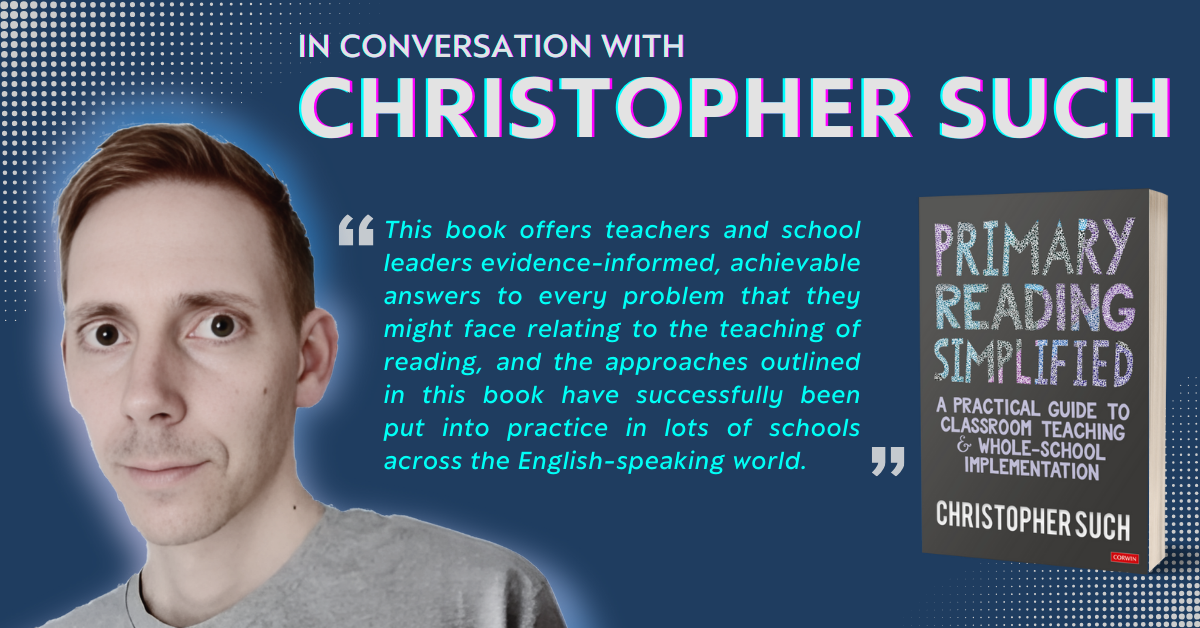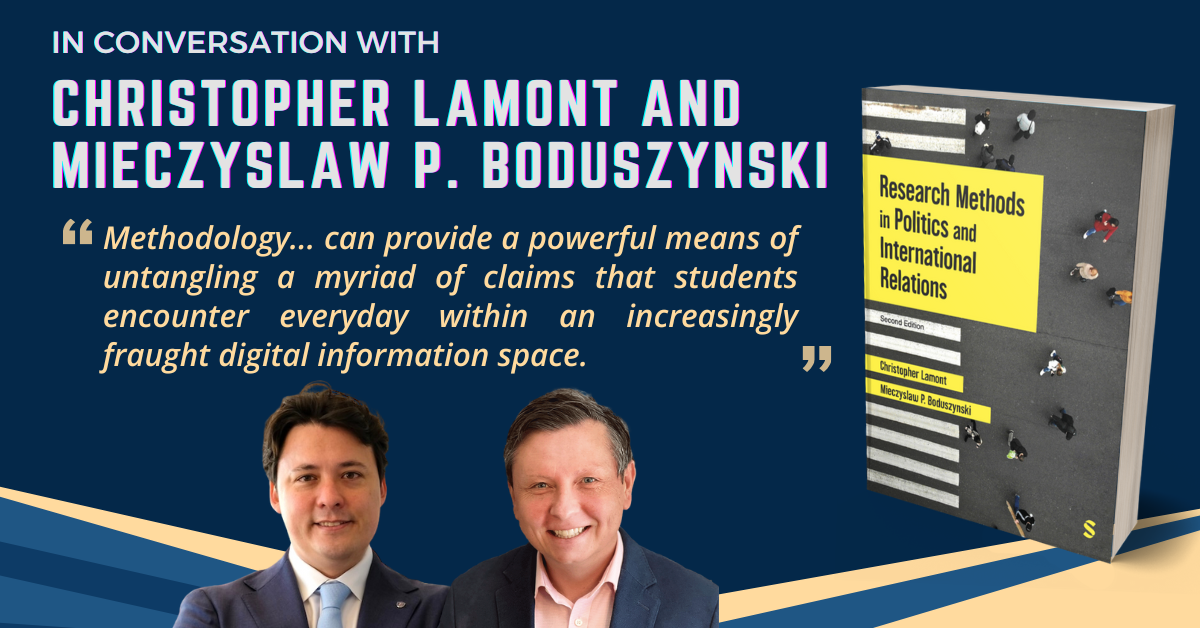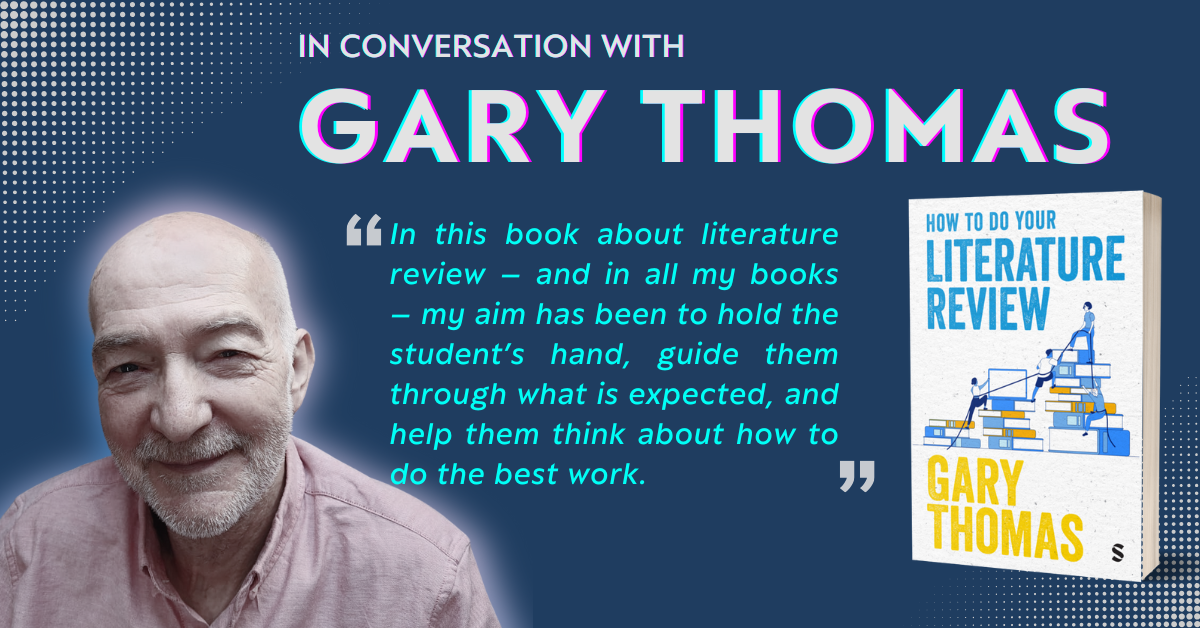
Reading is the foundation of all learning, yet teaching it effectively can often feel challenging, especially in today's diverse classrooms. To shed light on this crucial topic, we were privileged to interview Christopher Such, author of Primary Reading Simplified: A Practical Guide to Classroom Teaching and Whole-School Implementation. In this insightful conversation, the author shares his journey, inspiration, and practical strategies for transforming literacy education. Whether you're a teacher striving to enhance your approach or a school leader looking to empower your staff, this interview offers valuable advice for making a meaningful impact in the classroom. Let's dive in!
Can you tell us about yourself and your background?
I have worked in education since 2006, almost all of that time as a primary school teacher and school leader. My most recent in-school role was as curriculum and professional development lead at Fulbridge Academy in Peterborough, England. For the past few years, I have worked as a primary reading consultant, supporting schools and other organisations to better understand and implement evidence-informed approaches to reading instruction. Alongside this, I work as part of the learning design team at Ambition Institute, where I have helped to design their national professional qualification in leading literacy and their primary initial teacher training materials.
What inspired you to write “Primary Reading Simplified: A Practical Guide to Classroom Teaching and Whole-School Implementation”?
In 2021, I published my first book, The Art and Science of Teaching Primary Reading. The aim was to support teachers and school leaders to better understand the evidence available on reading instruction so that they could derive their own approaches to the teaching of reading in their schools. Since then, I have worked with hundreds of schools and thousands of educators, and in the process, I have learned that there is a thirst for practical, tried-and-tested support in every aspect of teaching reading. Primary Reading Simplified offers that support in every area of primary reading from structuring lessons to addressing reading difficulties to nurturing a culture of independent reading.
What unique perspective or approach does your book bring to the field of literacy education?
It is not common to find support for educators that marries deep understanding of the available research with experience of on-the-ground implementation across many schools. Primary Reading Simplified offers teachers and school leaders evidence-informed, achievable answers to every problem that they might face relating to the teaching of reading, and the approaches outlined in this book have successfully been put into practice in lots of schools across the English-speaking world.
How do you suggest teachers adapt the guidance in your book for diverse classrooms with varying levels of reading proficiency?
It is important to recognise that no two classrooms are exactly the same. Each aspect of Primary Reading Simplified is designed not only to support classroom practitioners to teach effectively but also to help them understand the underlying rationale so that they can adapt according to the needs of their class. For example, the reading lesson structures at the heart of this book are designed to allow teachers to support the full range of reading abilities, both by changing the proportion of lesson structures and by reacting to individual needs in the moment through focused support. Equally, the section on identifying and addressing reading difficulties provides practicable methods to ensure that all pupils have the greatest chance of becoming capable, confident readers. This combines targeted assessment of any barriers to reading development with interventions that address these barriers efficiently.
How can school leaders support teachers in implementing the strategies in this book?
This book is written with both the classroom teacher and school leader in mind. The book begins with a list of common problems faced by school leaders, which follows an equivalent list for classroom teachers. In response to each problem, school leaders are directed to a relevant section of the book that addresses it. For example, a section is dedicated to clearly explaining how school leaders can implement change across a school and undertake professional development with teachers to maximise the chances of success. As with every aspect of the book, the approaches to professional development and implementation have been undertaken in hundreds of schools and honed based on this experience.
What is the most significant takeaway you hope readers gain from your book?
More than anything, I want teachers and school leaders to learn that it is possible to craft an approach to reading that is significantly more effective and motivating than the status quo that exists across most of the English-speaking world. Central to this is ensuring that their school develops pupils’ reading fluency, provides a vast array of meaningful experiences with texts chosen for this purpose and engages pupils in deep discussion of written language to help them learn about the craft of writing and develop their identity as readers.

Enjoyed this article? Be sure to check out our other interviews with Sage Authors:
In Conversation with David Deakins and Jonathan M. Scott
In Conversation with Michael Beverland and Pınar Cankurtaran
In Conversation with Annmarie Hanlon
In Conversation with S Alexander Haslam, Craig McGarty, Tegan Cruwys & Niklas K. Steffens
In Conversation with James Abdey






